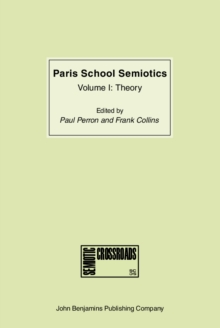
Linguistics and Psychoanalysis : Freud, Saussure, Hjelmslev, Lacan and others PDF
by Arrive Michel Arrive
Part of the Semiotic Crossroads series
Description
If you read or reread Freud, it is difficult not to find on a single page references to language: from speech to text, from slip of the tongue to word play, from letter to meaning-passing inevitably through the strange notion of literal meaning, that fascinated Freud. In short, the unconscious is linked to language. How could it be otherwise, if psychoanalysis is a cure through speech as indicated as early as 1881, by Fraülein Anna O.? The problem of the relationship between linguistic and psychoanalytic concepts necessarily arises. Until now this question has been examined mainly by psychoanalysts, from their own perspective, but here it is investigated by a linguist, who systematically explores two domains. The first is related to the sign and symbol, where the meeting of Freud, Saussure and Hjelmselv ocurred; whereas in the second, that of the signifier, Saussure reappears escorted by Lacan. But Freud is not far away, sine the Lacanian theory of the signifier is rooted not only in Saussure's Cours, but also in the Metapsychology and in Freud's Correspondence with Fliess. To aspire to unravel this knot, in fact corresponds to attempt a reading of the Lacanian aphorism “the unconscious is structured like a language”.
Information
-
Download - Immediately Available
- Format:PDF
- Pages:194 pages
- Publisher:John Benjamins Publishing Company
- Publication Date:11/06/1992
- Category:
- ISBN:9789027277299
Information
-
Download - Immediately Available
- Format:PDF
- Pages:194 pages
- Publisher:John Benjamins Publishing Company
- Publication Date:11/06/1992
- Category:
- ISBN:9789027277299










